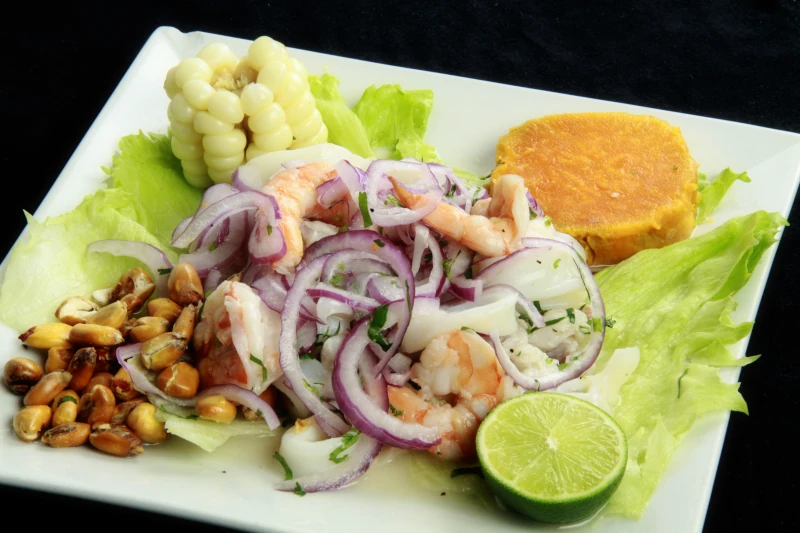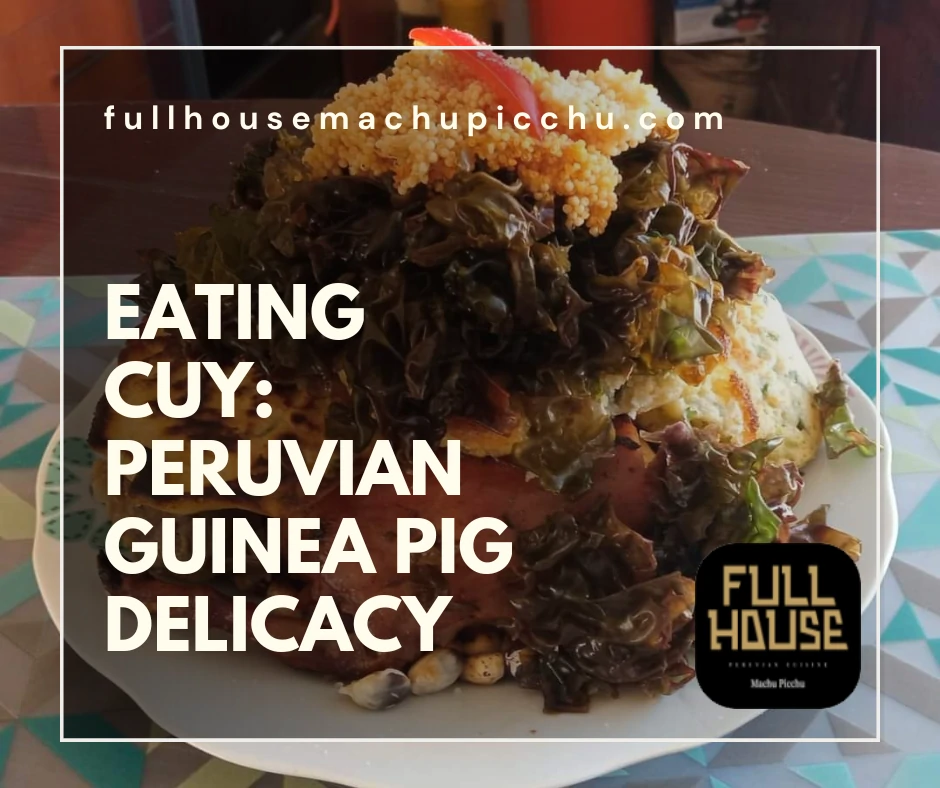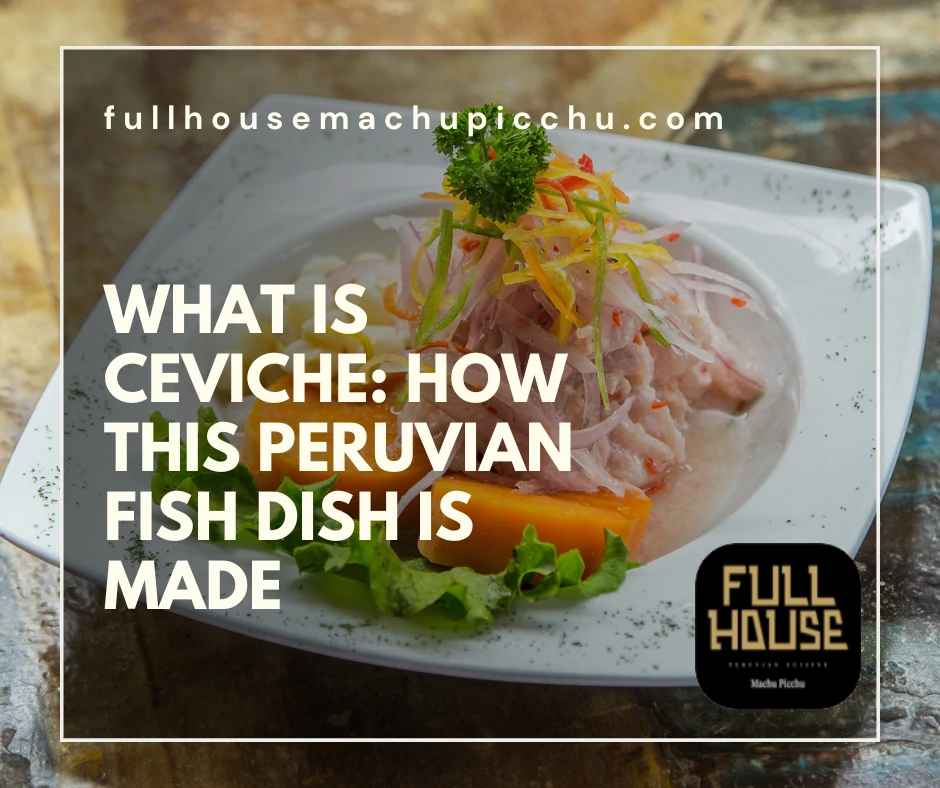Peru’s culinary scene is a vibrant tapestry of flavors. It’s a gastronomic journey that tells the story of the country’s rich cultural heritage. At the heart of this culinary landscape is the Peru national dish. It’s more than just a meal; it’s a symbol of national identity.
Ceviche, often considered the national dish of Peru, is a delightful blend of fresh fish, lime juice, onions, chili peppers, and cilantro. It’s a dish that captures the essence of the country’s coastal bounty.
But the Peruvian food story doesn’t end with ceviche. There are other contenders for the title of national dish, each with its unique taste and cultural significance.
This article will take you on a flavorful journey through Peru’s culinary landscape. It will explore the cultural significance, ingredients, and preparation of these dishes, and where to find the most authentic experiences.
So, get ready to savor a taste of Peru.
The Cultural Significance of Peru’s National Dish
Peru’s national dish holds immense cultural value. It’s a testament to the country’s diverse ethnic influences and natural resources. This dish represents a deep-rooted connection between food, history, and community.
The preparation and enjoyment of these dishes often bring people together. Sharing ceviche, for example, is a social event that strengthens communal bonds. Each bite tells a story of the country’s past and its various cultural influences, creating a sense of unity and pride among Peruvians.
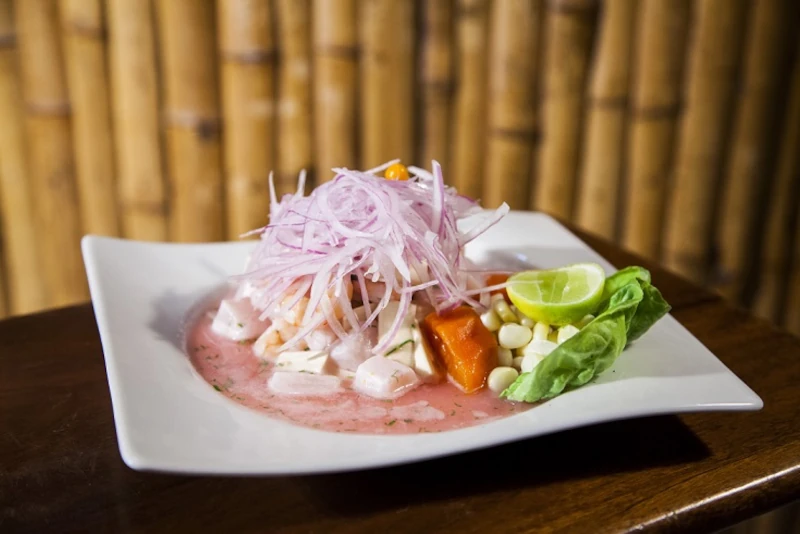
In Peru, food is intertwined with tradition and identity. The national dish is a centerpiece at celebrations and family gatherings. It’s an enduring expression of Peruvian heritage and resilience.
Ceviche: The Quintessential Peruvian Delight
Ceviche stands as Peru’s most iconic culinary masterpiece. Originating from pre-Columbian times, it encapsulates centuries of tradition. This beloved dish showcases Peru’s rich cultural tapestry through each flavorful bite.
Its preparation involves fresh seafood, marinated in citrus juices. The acid from the limes creates a unique taste, defining its character. A symphony of textures and flavors awaits anyone who tries ceviche.
This dish is more than just food in Peru. It serves as an occasion for family and friends to gather. Savoring ceviche becomes a celebration of life, offering both nourishment and connection.
Variations of Ceviche
- Traditional Ceviche: Fresh fish, lime, chili, onions.
- Mixto: Includes shrimp, squid, and shellfish.
- Nikkei: Featuring Japanese-inspired flavors and ingredients.
Ingredients and Preparation of Ceviche
Ceviche’s unique taste comes from specific ingredients. Fresh fish like sea bass is commonly used. Acidic lime juice “cooks” the fish, adding zing.
Chopped onions, chili peppers, and cilantro complement the fish. Traditionally, ceviche is served with sides like sweet potato and corn. These ingredients create a balanced, flavorful dish.
Preparation requires care. Fish must be fresh and cleaned thoroughly. The marination process is brief, ensuring a tender yet firm texture.
Where to Find the Best Ceviche in Peru
Lima offers exceptional ceviche experiences. This coastal city boasts numerous renowned ceviche bars. Restaurants like La Mar and El Mercado are must-visits.
However, the best ceviche isn’t limited to Lima. Coastal towns like Trujillo and Chiclayo serve remarkable versions too. Exploring local markets, you might find hidden ceviche gems.
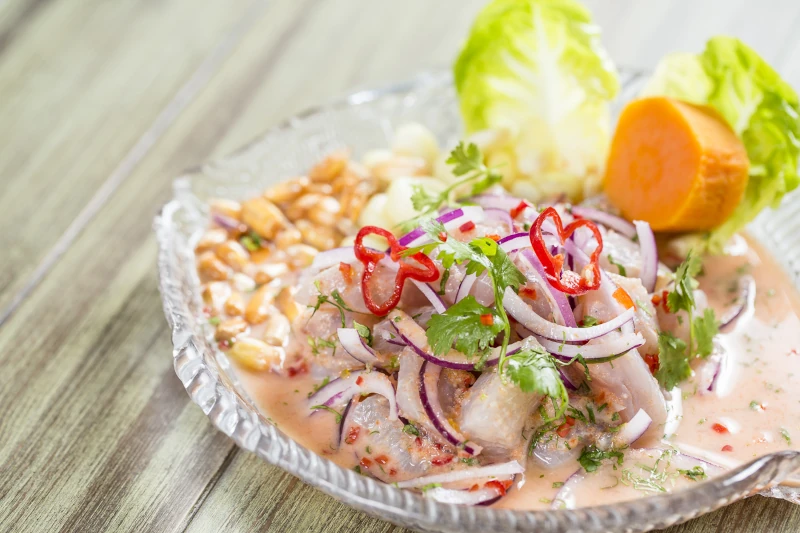
To truly experience ceviche, venture beyond the traditional places. Engage with local chefs and communities. Discover how regional nuances bring unique touches to their ceviche traditions.
At Full House Machu Picchu we offer a ceviche variation with trout. Check our menu HERE.
Other Contenders for the Title of Peru National Dish
Ceviche may claim the spotlight, but other dishes vie for Peru’s national title. Lomo Saltado and Aji de Gallina are significant culinary rivals. Each dish has its own story, flavor, and fan base.
Both dishes exemplify Peru’s fusion cuisine roots. They reflect the Spanish and indigenous influences that permeate the culinary scene. Exploring these dishes further enriches one’s appreciation of Peruvian food.
Lomo Saltado: A Culinary Fusion
Lomo Saltado is a savory stir-fry delight. It mixes tender strips of beef with tomatoes, onions, and spices. This dish displays the perfect blend of Chinese and Peruvian flavors.
The unique addition of French fries makes it stand out. Often served over rice, Lomo Saltado satisfies with its robust taste. It’s a dynamic dish that captures the essence of cultural fusion.
Aji de Gallina: A Creamy Peruvian Classic
Aji de Gallina represents comfort in a bowl. This creamy chicken stew uses aji amarillo peppers for flavor. Its mild heat contrasts with the dish’s velvety texture.
The sauce, enriched with walnuts and bread, complements the tender chicken. Often served with potatoes and rice, it’s a favorite among locals. For those exploring Peruvian cuisine, Aji de Gallina provides a fulfilling experience.
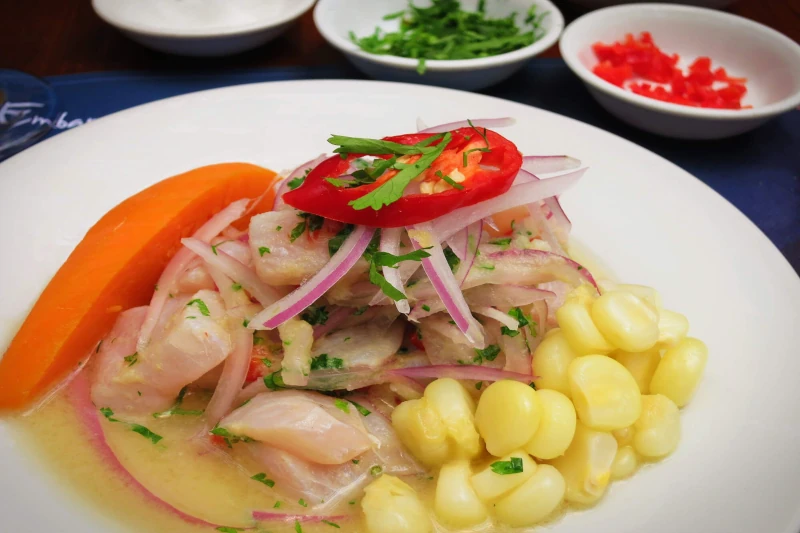
Peruvian Cuisine: A Melting Pot of Flavors
Peruvian cuisine reflects a rich tapestry of global influences. It combines indigenous, Spanish, African, Asian, and European flavors. This unique blend results in some of the world’s most diverse culinary offerings.
The country’s gastronomic diversity is a source of national pride. Chefs skillfully weave together ingredients from varied cultures and landscapes. This fusion creates dishes that are both delightful and deeply rooted in tradition.
Regional Variations and Indigenous Influences
In Peru, food varies widely by region. Each area boasts its own unique dishes and ingredients. Coastal, Andean, and Amazonian cuisines highlight the country’s vast biodiversity.
Indigenous influences remain strong in many traditional dishes. Time-honored cooking methods and native ingredients contribute to the vibrant culinary scene. Visitors will experience rich heritage intertwined with contemporary flavors throughout Peru.
Sustainable Tourism and Culinary Preservation
Sustainable tourism in Peru emphasizes cultural preservation and environmental protection. Visitors are encouraged to respect local traditions when exploring the culinary scene. This practice ensures that Peru’s rich heritage continues to thrive.
Gastronomy is closely tied to sustainability in Peru. Chefs and restaurateurs collaborate with local farmers to use fresh, organic ingredients. This approach supports the economy and reduces environmental impact, benefiting both locals and tourists.
Supporting Local and Eco-Friendly Dining
Dining in Peru offers a chance to support local communities. Visitors can choose family-owned eateries and markets that champion traditional practices. These venues showcase authentic Peruvian flavors, making for memorable experiences.
Eco-friendly dining options are also on the rise. Restaurants are increasingly prioritizing sustainable practices by minimizing waste and sourcing ingredients responsibly. By choosing these establishments, travelers contribute positively to Peru’s culinary landscape and future.
Embracing the Taste of Peru: Peru National Dish
Peru offers travelers a unique culinary adventure. Its national dishes reflect a deep-rooted cultural tapestry that extends beyond mere ingredients. Food enthusiasts visiting Peru are rewarded with a harmonious blend of flavors and traditions.
As you savor each bite, remember the rich history and vibrant cultures that make Peruvian cuisine special. Whether you explore bustling markets or dine in cozy local eateries, the spirit of Peru comes alive in every meal. Embrace these experiences and take a piece of Peru with you on your culinary journey.
